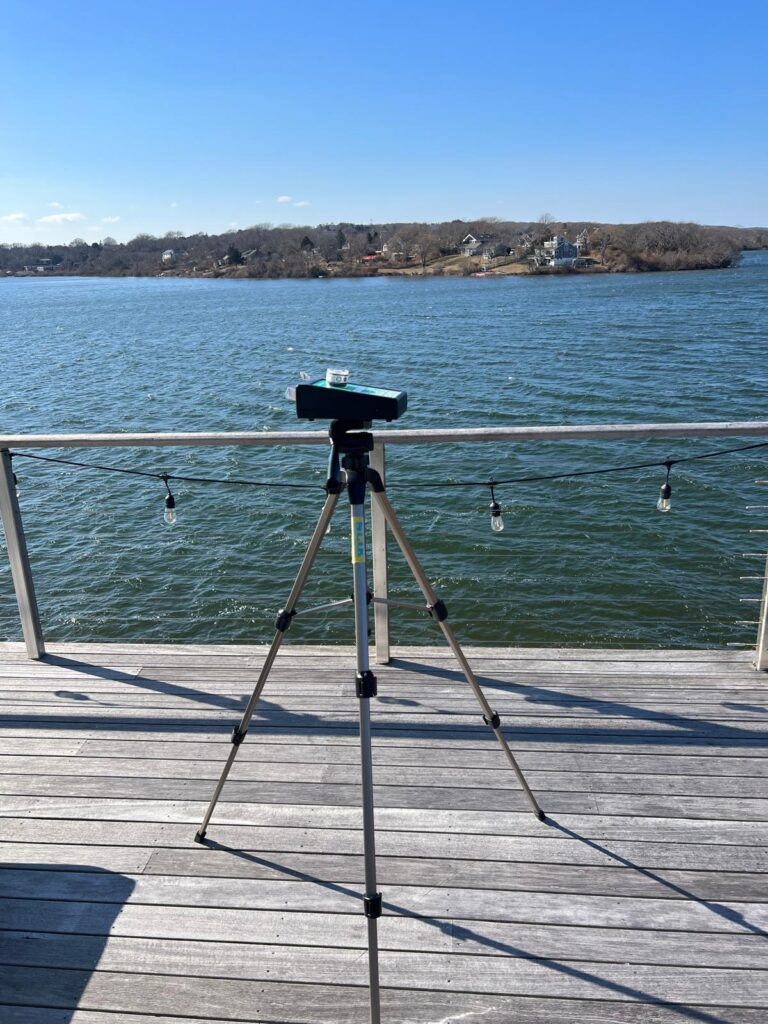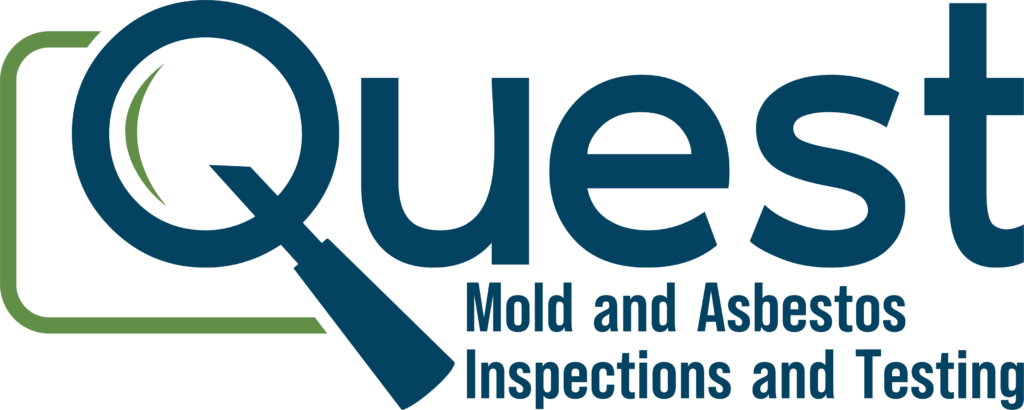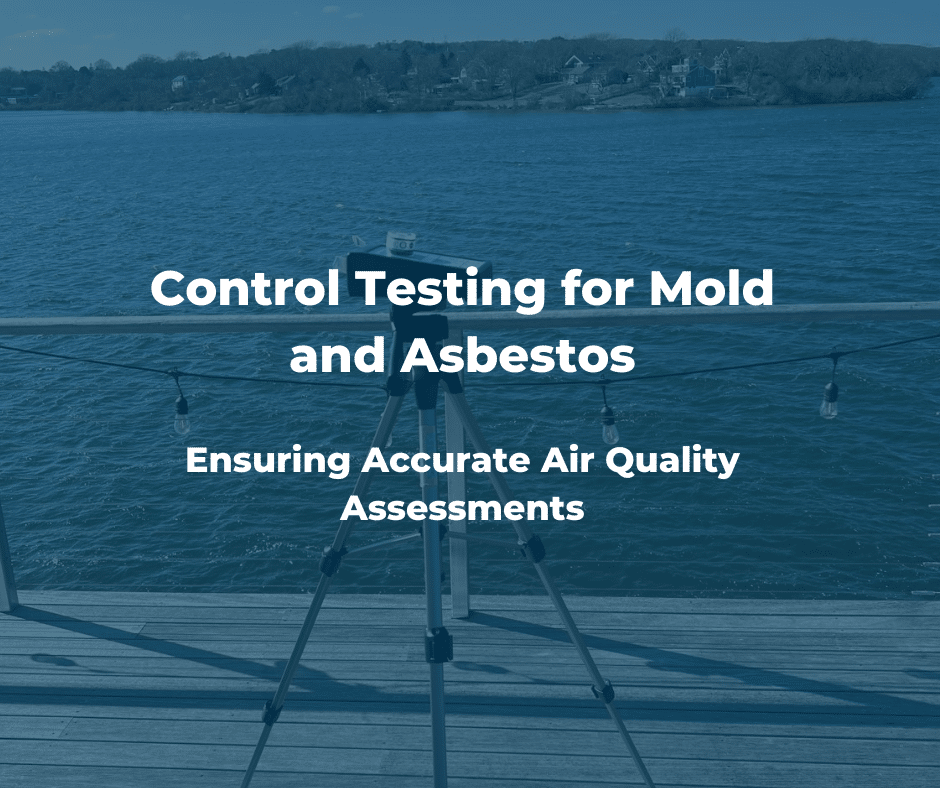One of the most critical steps in mold inspectors and asbestos inspectors is receiving accurate results to determine any potential health effects and remediation steps needed. Control testing, or ambient outdoor testing, is one of the most critical aspects of air quality testing. Control testing is a key part of this process beyond the actual inspections: at Quest Mold and Asbestos Inspections and Testing, we value accuracy and reliability in our inspections—and control testing helps you obtain the most accurate assessment possible.
But what is control testing, and why is it important? In this blog, we discuss ambient outdoor testing — what it is, its significance and its role in mold and asbestos inspections, and how having reliable data from the test gives property owners, tenants, and businesses the confidence they need in their area.

D. What’s Control (Ambient Outdoor) Testing?
Control testing, known in the industry as ambient outdoor testing, is the first step in collecting air samples from outside of a building to set a baseline for comparison against indoor air samples. This is an important step in mold and asbestos inspections as it helps to establish a normal background level of spores or fibers that may occur in the environment versus those that could indicate a contamination event within a property.
Mold spores (and, in some cases, asbestos fibers) also enter the building from outdoor sources, which are either naturally occurring or because of external pollution. By testing outdoors, inspectors have a way of determining whether concentrations indoors are above what would be expected under normal environmental conditions.
Mold Inspections — Why and How Ambient Outdoor Testing Plays Its Role
1. Setting a Baseline for Comparison
Mold spores are generally found in the natural environment, including outdoors. One of the main reasons to perform ambient outdoor testing is to create an initial or baseline reading. So without it you can never really tell whether an indoor mold issue is significant or simply natural.
For example, an indoor air sample may show 1,000 spores per cubic meter of air. But, if the outdoor sample is 1,500 spores per cubic meter, then the indoor reading is actually below the natural background, so there’s not an indoor mold issue. But, if the outdoor sample shows only 500 spores per cubic meter and the indoor shows 5,000 spores…there may be a potential indoor mold problem that needs to be investigated further.
2. How to Find Indoor Mold Sources
If the inspectors can compare indoor and outdoor air samples, they can ascertain whether the mold that exists in a property is coming from an indoor source rather than being brought in from outside. Indoors mold levels that amount to significantly higher than outdoors levels indicate an active mold growth problem within the building due to moisture problems, leaks, or lack of airflow.
3. Giving Correct, Non-Partisan Results
Conclusions reached by mold inspections without outside control samples can be misleading. Without guidance, an inspector might categorize mold as serious when they’re just reflecting an environment nature designed. Control testing hes a guide avoiding unnecessary remediation processes by making sure proper interpretations of the test results.
4. Documentation for Legal and Insurance Claims
Objective and scientifically correct evidence is crucial when handling landlord–tenant disputes, real estate transactions, or insurance claims. The work done outside in ambient environments offers a legitimate comparison point that reinforces findings and helps justify decisions around mold remediation and repairs to a property.
Why Ambient Outdoor Testing Is Important in Asbestos Inspections
In contrast, asbestos filaments are not found in the outside environment in significant amounts, as is the case with mold. In fact, trace outdoor sampling helps validate any additional vibration in air testing, especially when dealing with contamination or environmental exposure assessments.
1. Background Asbestos Fibers Detection
Outdoor air may contain small amounts of asbestos fibers in urban or industrial areas, likely coming from past use in construction materials or vehicle emissions. Analysis of control testing indicates whether the presence of indoor asbestos exceeds normal background levels, thus potentially creating the exposure risk.
2. This is a brief list of the steps we recommend you take.
When an asbestos-containing material (ACM) is disturbed in a building, fibers can be released into the air. Outdoor testing could determine whether asbestos contamination has spread, which is important for remediation planning and to assure community safety.
3. Test air quality after abatement
Before re-occupying a space where asbestos removal or abatement has taken place, it is essential to conduct post-remediation testing to confirm the air is safe. Outdoor ambient tests can help confirm that indoor asbestos fiber concentrations are at acceptable levels and not significantly higher than naturally occurring outdoor levels.
How Control Testing is Performed
Our trained professionals at Quest Mold and Asbestos Inspections and Testing, have strict protocols for control (ambient outdoor) testing. This process usually involves the following steps:
- Selection of Outdoor Sampling Location – We select locations away from immediate sources of contamination (e.g. construction sites) to obtain a sample that is representative of background levels.
- Specialized Equipment – Air volume sampling pumps and cassettes are utilized to collect airborne mold spores and asbestos fibers.
- Matching Sampling Conditions – Upon sampling outside, conditions must be comparable to those inside; indoor samples are more reliable with surrounding samples.
- Laboratory Analysis – Sampled specimens are processed in accredited laboratories for microscopic examination and identification
- Data Interpretation – Results obtained are compared to those of indoor samples and conclusions are made if contamination could have occurred.
Why Quest Mold and Asbestos Inspections and Testing are Trusted?
Specialized in mold and asbestos testing, Quest Mold and Asbestos Inspections and Testing provides accurate, unbiased and dependable results. Our full-qualified inspectors use industry standard procedure and tools for precise environmental assessments. You will know if you need a licensed mitigation professional after our comprehensive testing services, which will help you make informed decisions regarding the indoor air quality of your home or business.
Conclusion
Ambient outdoor control testing is essential during mold and asbestos inspections. It serves as a vital benchmark for assessing airborne pollution levels within buildings and can help accuracy test results and stall unwarranted remediation action. By establishing baseline levels of mold spores and asbestos fibers, inspectors are able to determine whether an issue actually exists inside of a building, or whether what they are seeing is simply in line with ambient environmental conditions.
Quest Mold and Asbestos Inspections and Testing can assist you with the professional mold and asbestos testing services you require. Call 📞 917-277-7580 or 📩 [email protected] for inspection today!


